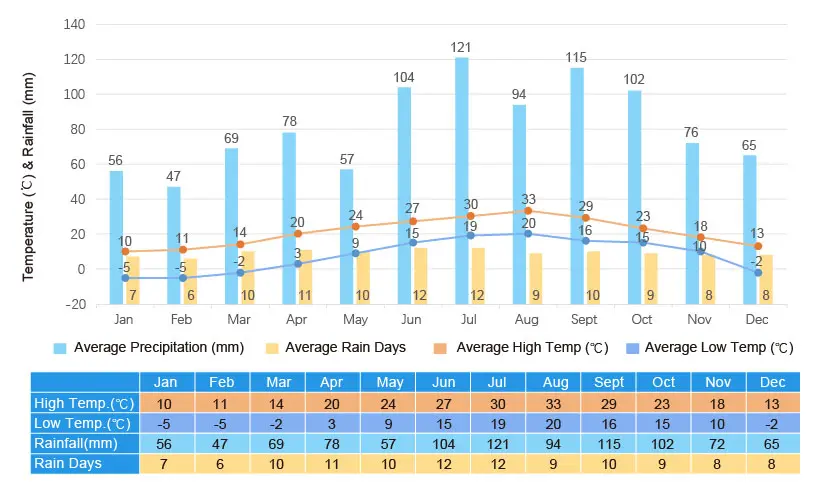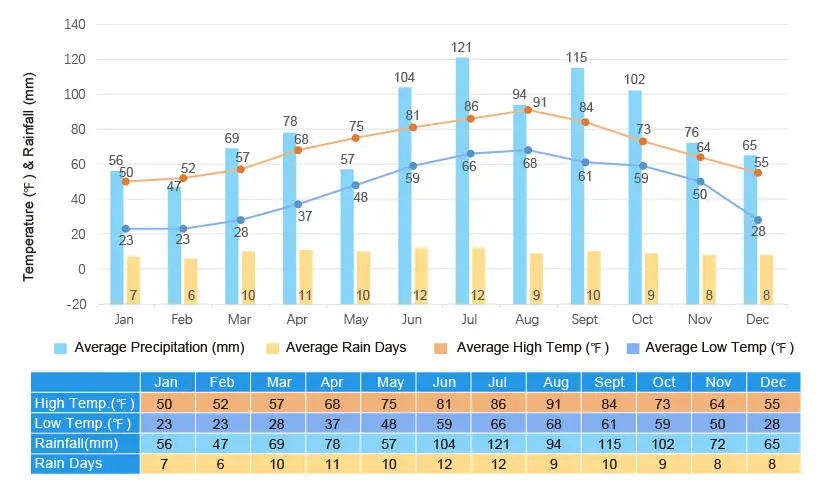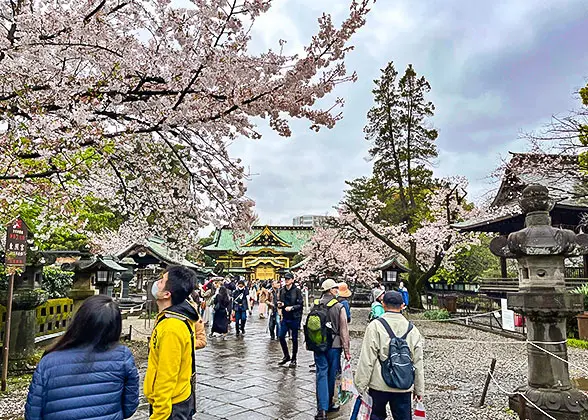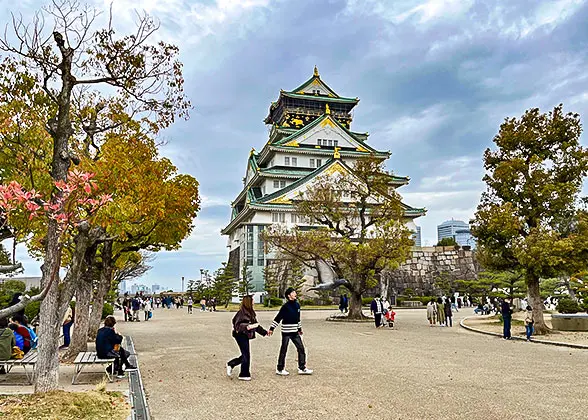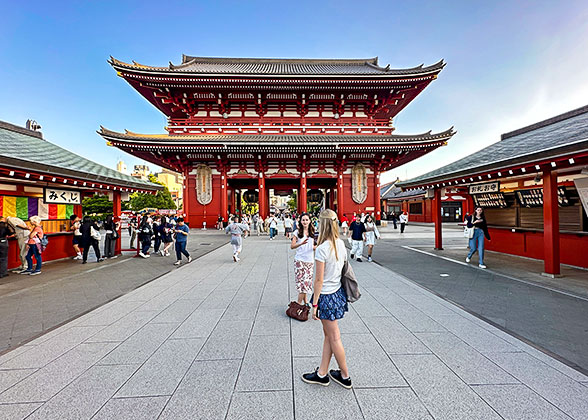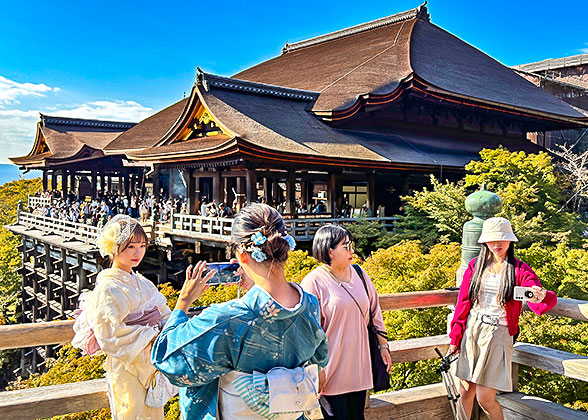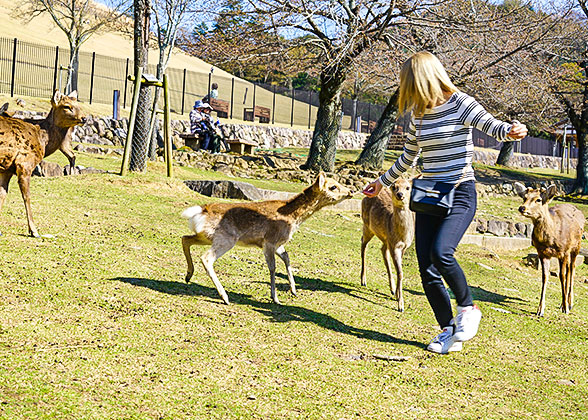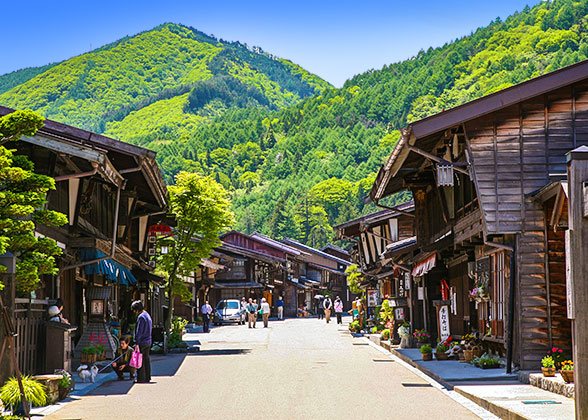Japan Weather
Facts of Japan Climate & Weather
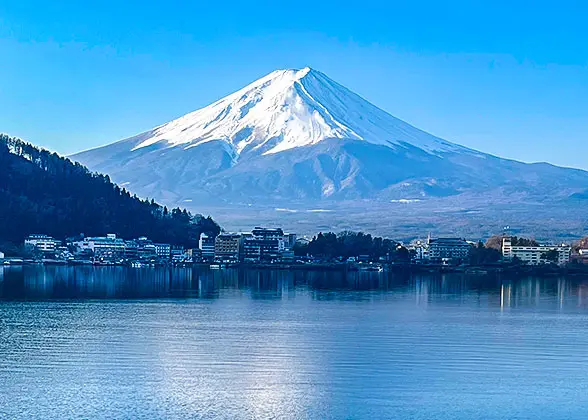 |
| Mount Fuji |
Japan is made up of four major islands (Hokkaido, Honshu, Kyushu and Shikoku) and a number of small islands, encircled by the ocean. Thus, Japan weather is highly impacted by ocean, which brings a high humidity all the year round. June and July see the rainy season in Japan, and typhoons usually come from late August to early October. It has four distinct seasons: the summer generally from June to August is torrid while the winter from December to February is freezing; spring and autumn are pleasant as a whole.
Most places in Japan is in the temperate climate zone, with the average high temperature reaching 33℃ (91.4℉) in August, and the average low temperature of 2-3℃ (35.6-37.4℉) in January. The southeast monsoon from the Pacific Ocean blows across Japan in summer, while the northwest monsoon from Siberia sweeps over the country in winter. Japan weather also varies due to the large geographical span in north-south direction. The northerly places are in sub-frigid zone, with lower temperature; while the southerly regions are in subtropical zone with higher temperature.
| Month | Travel Recommendation | Season | Average Temperature |
|---|---|---|---|
| January | Winter | -5-10℃ (23-50℉) | |
| February | Winter | -5-11℃ (23-51.8℉) | |
| March | Spring | -2-14℃ (28.4-57.2℉) | |
| April | Spring | 3-20℃ (37.4-68℉) | |
| May | Spring | 9-24℃ (48.2-75.2℉) | |
| June | Summer | 15-27℃ (59-80.6℉) | |
| July | Summer | 19-30℃ (66.2-86℉) | |
| August | Summer | 20-33℃ (68-91.4℉) | |
| September | Autumn | 16-29℃ (60.8-84.2℉) | |
| October | Autumn | 15-23℃ (59-73.4℉) | |
| November | Autumn | 10-18℃ (50-64.4℉) | |
| December | Winter | -2-13℃ (28.4-55.4℉) |
Regional Weather of Japan
Northern Japan – Hokkaido & Northern Honshu
Central Japan – Most Areas in Honshu
![]() Major Destinations: Tokyo, Hakone, Osaka, Kyoto, Nara
Major Destinations: Tokyo, Hakone, Osaka, Kyoto, Nara![]() Weather Review: The middle part of Japan has pleasant spring and autumn, muggy summer and chilly winter. There is much rain from late June to July, and typhoons also bring an amount of rainfall in September. However, it rarely snows in downtowns in winter, and only the mountains can be covered by snow.
Weather Review: The middle part of Japan has pleasant spring and autumn, muggy summer and chilly winter. There is much rain from late June to July, and typhoons also bring an amount of rainfall in September. However, it rarely snows in downtowns in winter, and only the mountains can be covered by snow.![]() Travel Recommendation: The central region, including popular Kanto and Kansai, is well-known for spring cherry blossoms and colorful autumn leaves. In addition to natural beauty, there are many historical sites, especially the old capital remains in Kansai. Traditional seasonal festivals, onsen bathing, Meiji Shrine and Sensoji Temple in Tokyo, Fushimi Inari Taisha, Kiyomizu-dera Temple, Arashiyama, etc. in Kyoto are absorbing. Skyscrapers like Tokyo Tower and Abeno Harukas, and theme parks like Tokyo Disney Resort and Universal Studios are also visit-worthy spots for fun.
Travel Recommendation: The central region, including popular Kanto and Kansai, is well-known for spring cherry blossoms and colorful autumn leaves. In addition to natural beauty, there are many historical sites, especially the old capital remains in Kansai. Traditional seasonal festivals, onsen bathing, Meiji Shrine and Sensoji Temple in Tokyo, Fushimi Inari Taisha, Kiyomizu-dera Temple, Arashiyama, etc. in Kyoto are absorbing. Skyscrapers like Tokyo Tower and Abeno Harukas, and theme parks like Tokyo Disney Resort and Universal Studios are also visit-worthy spots for fun.![]() See more about Tokyo Weather Osaka Weather Kyoto Weather Nara Weather Mount Fuji Weather
See more about Tokyo Weather Osaka Weather Kyoto Weather Nara Weather Mount Fuji Weather
|
|
Southern Japan – Kyushu, Shikoku & Okinawa
![]() Major Destinations: Naha, Kumamoto, Fukuoka, Hiroshima, Matsuyama
Major Destinations: Naha, Kumamoto, Fukuoka, Hiroshima, Matsuyama![]() Weather Review: Located in subtropical zone, the weather in the south of Japan is warmer than in other places. In particular, it’s mild and wet throughout the year in Okinawa, with neither extreme high nor very low temperature. Only the north of Kyushu and the southernmost of Honshu are perhaps a little cold in winter.
Weather Review: Located in subtropical zone, the weather in the south of Japan is warmer than in other places. In particular, it’s mild and wet throughout the year in Okinawa, with neither extreme high nor very low temperature. Only the north of Kyushu and the southernmost of Honshu are perhaps a little cold in winter.![]() Travel Recommendation: The southwest of Honshu houses Hiroshima for the popular sightseeing of atomic bombing sites. Kyushu is famous for its volcanoes, hot springs, the long tropical coastline, and numerous offshore islands. All these make Kyushu a destination for cruises and leisure holidays. Beppu Jigoku Onsen, Sakurajima volcanic island, etc. are the most popular to experience the extraordinary charm. The beaches of Okinawa attract numerous tourists, which makes the region crowded for seaside fun.
Travel Recommendation: The southwest of Honshu houses Hiroshima for the popular sightseeing of atomic bombing sites. Kyushu is famous for its volcanoes, hot springs, the long tropical coastline, and numerous offshore islands. All these make Kyushu a destination for cruises and leisure holidays. Beppu Jigoku Onsen, Sakurajima volcanic island, etc. are the most popular to experience the extraordinary charm. The beaches of Okinawa attract numerous tourists, which makes the region crowded for seaside fun.
Typhoon Season in Japan
Japan is prone to typhoon attacks in late summer and autumn, specifically from late August to early October. Typhoons hit the coasts of Japan mainly in September, while there is merely a small chance of typhoon in late August or early October. The typhoon days should be avoided when planning a Japan tour. It’s necessary to watch local weather forecast if you happen to be there in the typhoon season.
 C
C